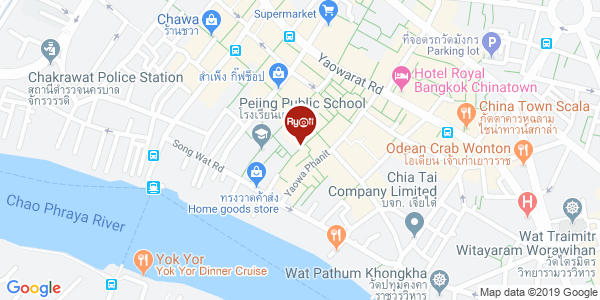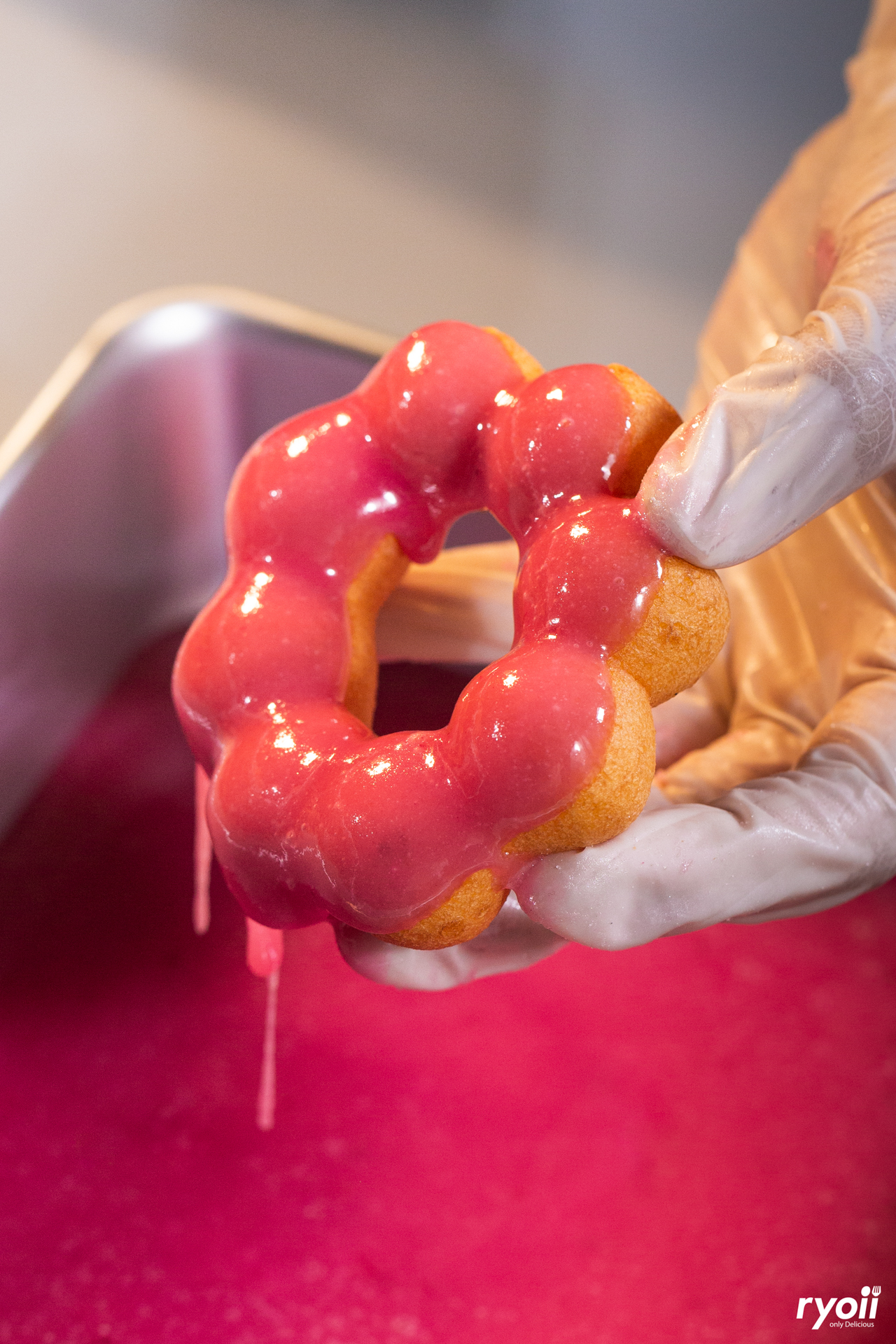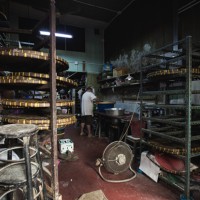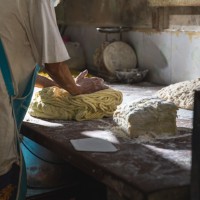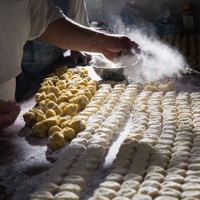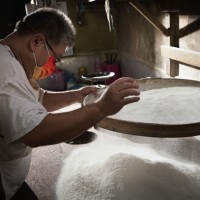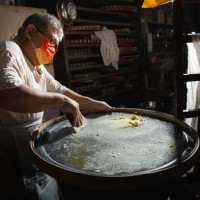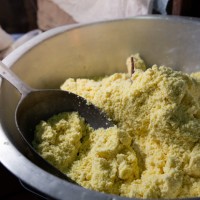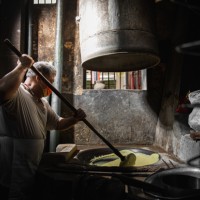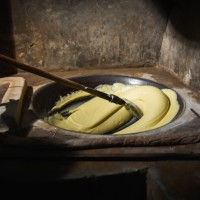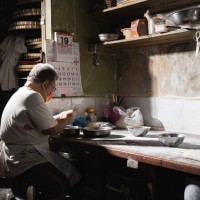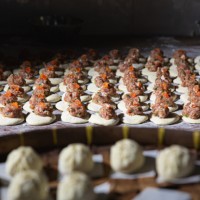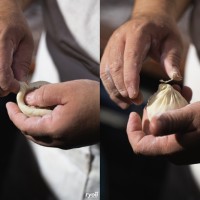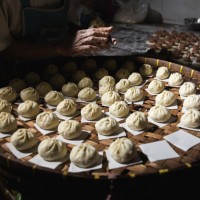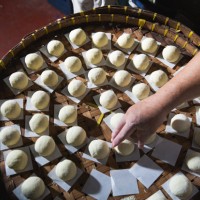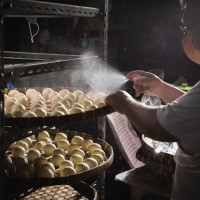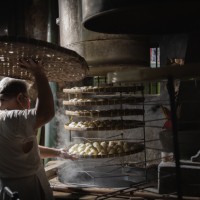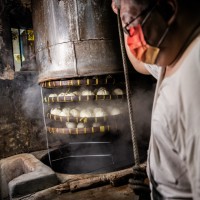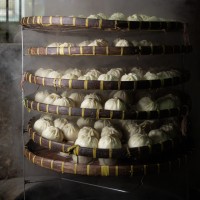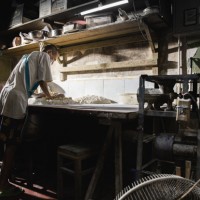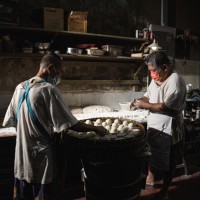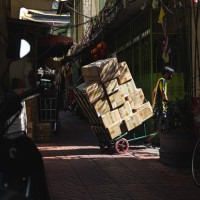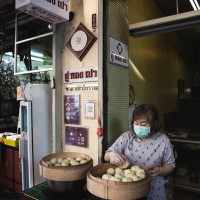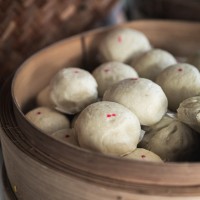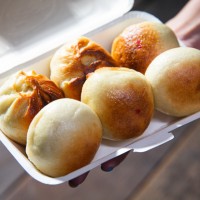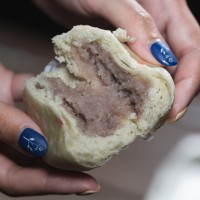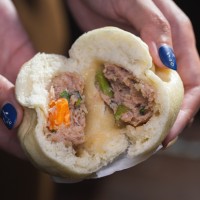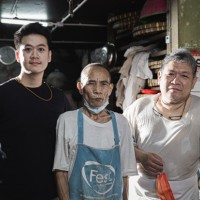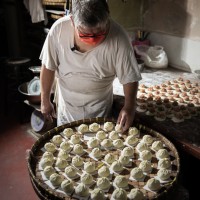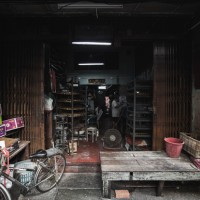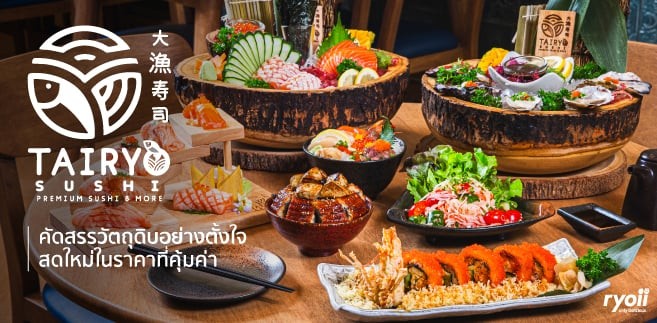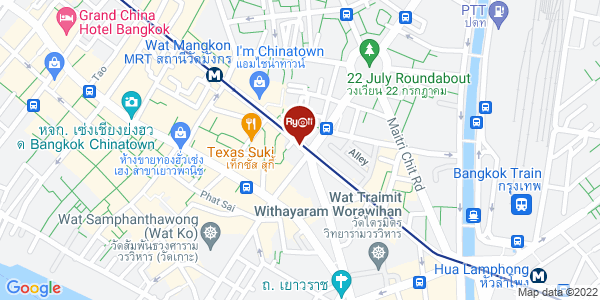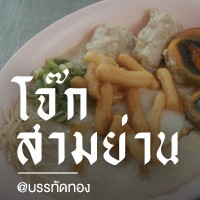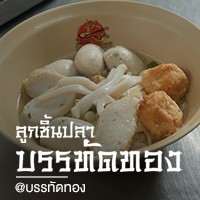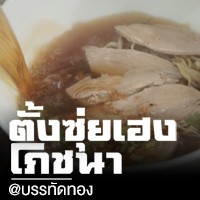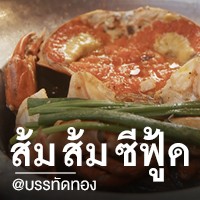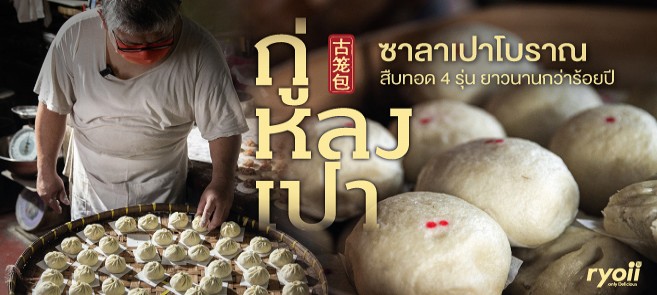
A Review of Gu Long Bao, Teochew-style Steamed Buns with a Centuries-old Recipe, in Yaowarat
Around Sampheng Market, there are many hidden old shops including ‘Tia Thong Seng’ aka ‘Gu Long Bao,’ a century-old steamed bun shop at Yaowarat. This shop has preserved the delicious tastes of Teochew-style steamed buns for more than 4 generations or about 100 years. From ‘Tia Thong Seng’ to ‘Gu Long Bao,’ tastes, traditional making processes, and centuries-old stories of steamed buns are still the same so this extremely tempts eaters to try it.
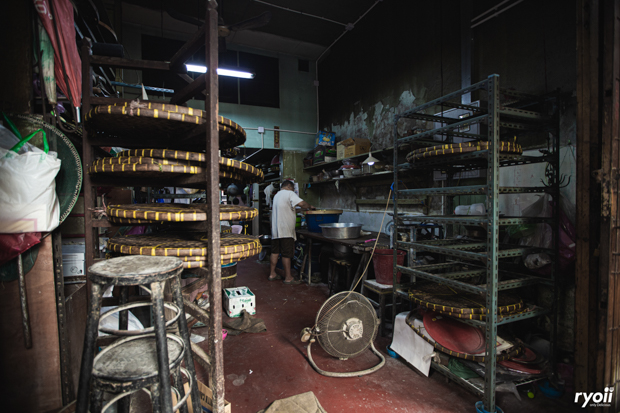
Tia Thong Seng, having a good meaning of ‘prosperous business,’ is an old steamed bun shop run by family members. Formerly, Tia Thong Seng of Uncle Seng was a prosperous steamed bun shop like its name because customers spread word of mouth and the shop always sold steamed buns on many festivals: Chinese New Year, the Ghost Festival, Qingming Festival, and the day for paying respect to Chinese gods.
SPONSORED
Uncle Seng is the 4th generation of this shop and keeps making steamed buns until now.
The signature of Tia Thong Seng’s steamed buns is in Teochew-style steamed buns made meticulously by hand, which is something that not everyone can do. Although it’s a handicraft that is hard to do, Uncle Seng is the main person who has made these Teochew-style steamed buns for more than 40 years.
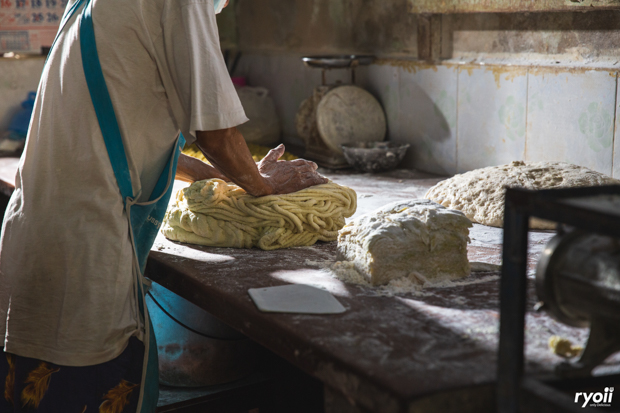
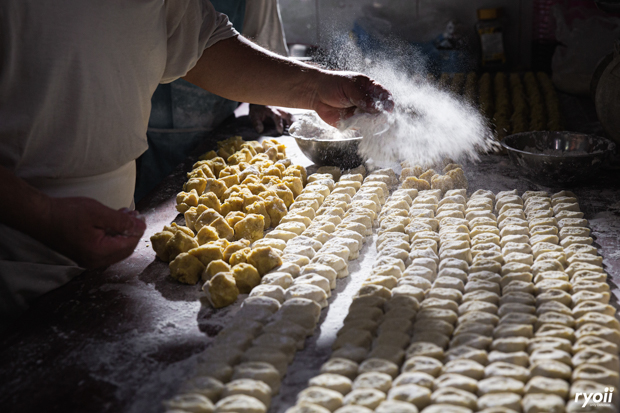
Its Teochew-style steamed buns are yellow steamed buns coming from sweet potatoes. These sweet potatoes hugely make steamed buns soft, naturally sweet, and not sticky so it allows many people to continuously eat and love them.
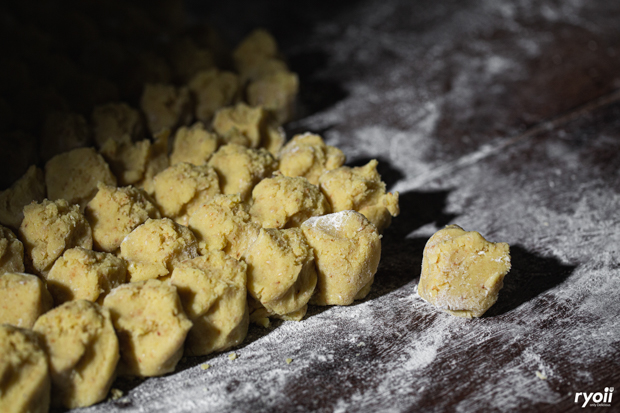
Sweet Potatoes, an Important Ingredient That Can Make Steamed Buns Light Yellow, Naturally Sweet, and Softer
In the early morning, Uncle Seng always kneads the dough and then mixes it with sweet potatoes. Although he uses a dough kneading machine in some processes, he still kneads the dough with his hands in most steps. After that, he cuts it into more than 100 pieces every day.
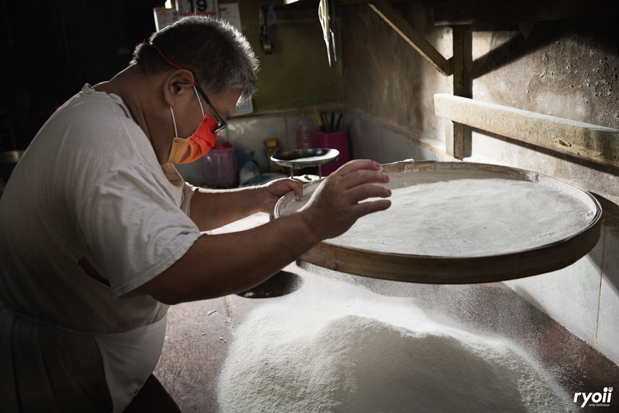
Kneading the dough is just one of the steps of making old-style steamed buns. Another important thing besides making light yellow dough is the flavor of steamed buns as each flavor is made from different delicate processes. In this shop, there are 3 flavors: sweet beans with sesame seeds, taro, and minced pork with salted egg yolks.
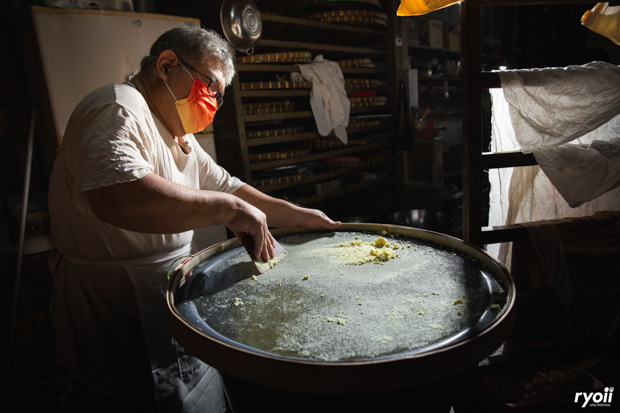
Sweet beans with sesame seeds are the original flavor made from peeled mung beans that have a better smell than normal beans. Firstly, he will put peeled mung beans into the water and then steam them. Surprisingly, this step can waste about 4 hours. Next, he will sift it until it’s fine. Then, he will stir those beans with granulated sugar and oil until it becomes gooey.
In this flavor, there is a secret ingredient, sesame seeds, which can make the flavor more delicious. Uncle Seng always toasts sesame seeds to get their smell and then mixes them with that flavor.
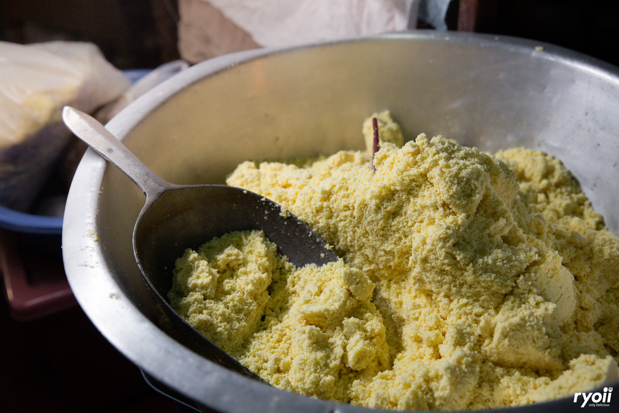

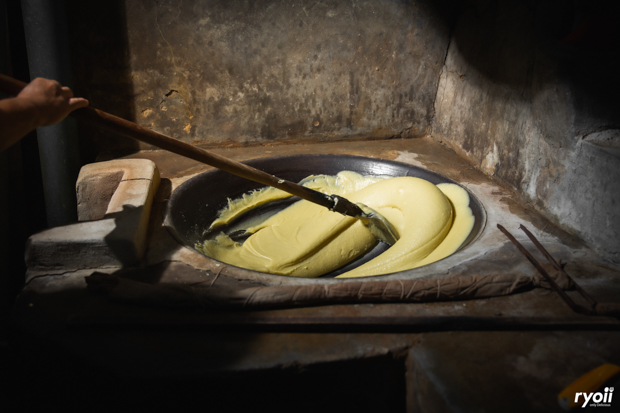
The process of making taro flavor is the same as the sweet bean one. He will steam, smash, and stir fresh taros. This is hard because the taro is easier to burn than the sweet bean so we have to be careful.
The last flavor is minced pork with salted egg yolks, which is the most popular flavor of Teochew-style steamed buns. The differences between each type of steamed bun depend on the minced pork flavor. For example, Hokkien-style steamed buns’ flavor is like stewed pork, Cantonese steamed buns’ flavor is steamed BBQ pork, and the Teochew-style steamed buns' flavor is mellow minced pork.
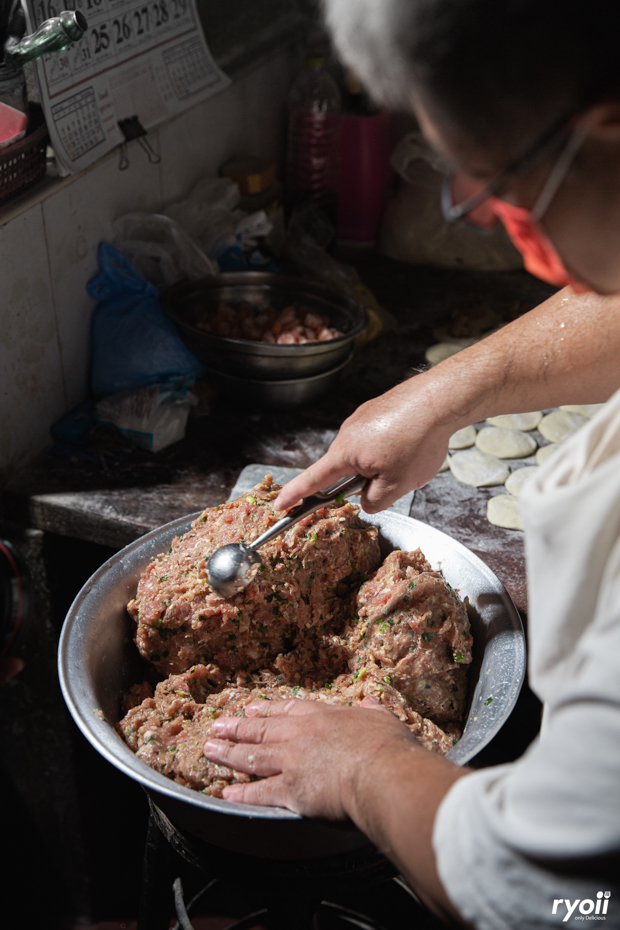
Besides minced pork, this flavor consists of another important ingredient, salted egg yolks which are cut day by day and can make minced pork flavor more mellow.


After preparing the flavor, he will put it into the dough piece by piece from the minced pork flavor to the sweet bean one with sesame seeds.
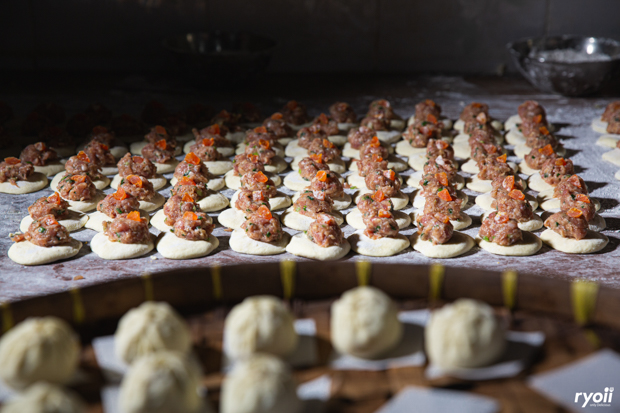
Even though the next process, pleating and making steamed buns, does not affect the taste, it’s still an important process that makes steamed buns look tastier. This process also needs many skills to do like other processes.
Uncle Seng said that though he teaches others how to do this process, it doesn’t mean that everyone can do it easily because they have to practice every day until they are proficient in it.
Uncle Seng has practiced pleating steamed buns since he was a kid. As he has the 40-year-old of experience, Uncle Seng can do it proficiently so it’s hard to copy his masterpiece. This process depends on each person’s way of pleating it. It will be different if they do it differently.
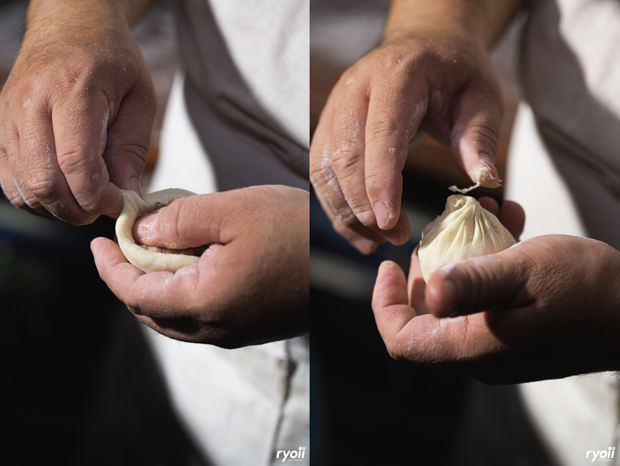
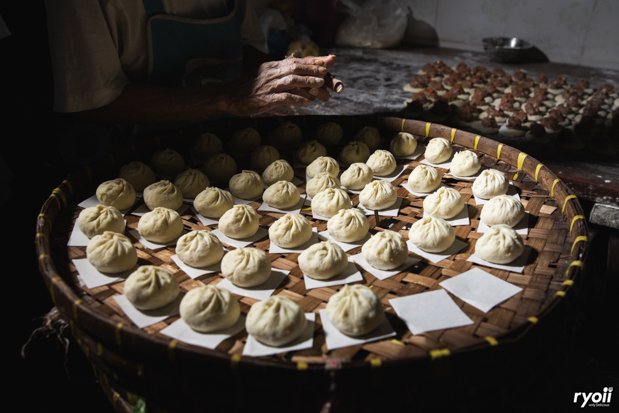
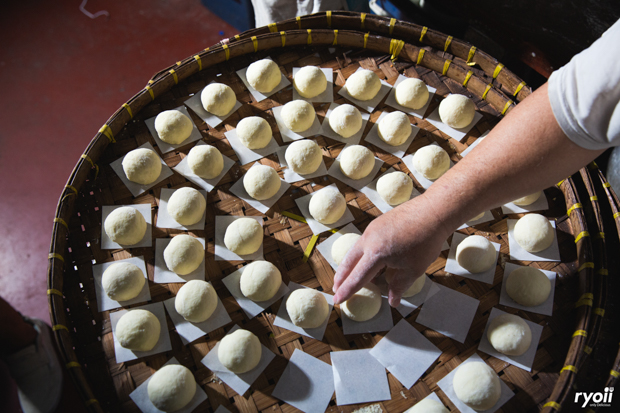
Although fluffy steamed buns have no need to be pleated, he still pleats them meticulously until it’s beautiful and fluffy.
After adding the flavor to steamed buns, it’s time to rest the steamed buns to make them fluffy before steaming. Even though this process looks easier than others, Uncle Seng still spends much time doing this because each flavor needs time for rest differently. For instance, minced pork with salted egg yolk steamed buns that must use old yeasts needs to be rested for 3 hours before steaming, and sweet bean steamed buns can be rested just for a while and then be steamed immediately after resting.
The time of resting steamed buns is a small detail that Uncle Seng inherited from his Mom. This hugely makes the steamed bun soft and fluffy.
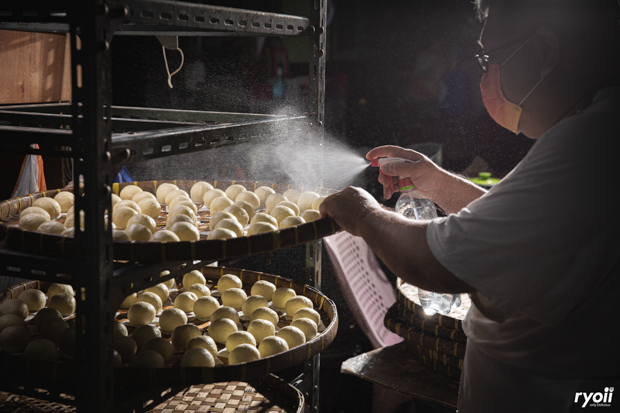
Let’s move to an important process which is steaming. It’s one of the signatures of this shop because he still steams the buns in 90-year-old traditional Chinese wood-fired ovens, the 1st generation of ovens that Uncle Seng’s ancestors used. From the beginning, the shop used classic wood-fired ovens. Then, they have to change from it to gas ovens. Anyway, he still keeps the traditional Chinese ovens though he doesn’t use them anymore.
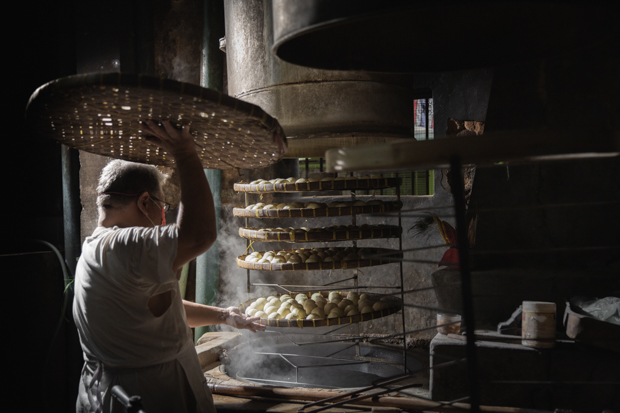
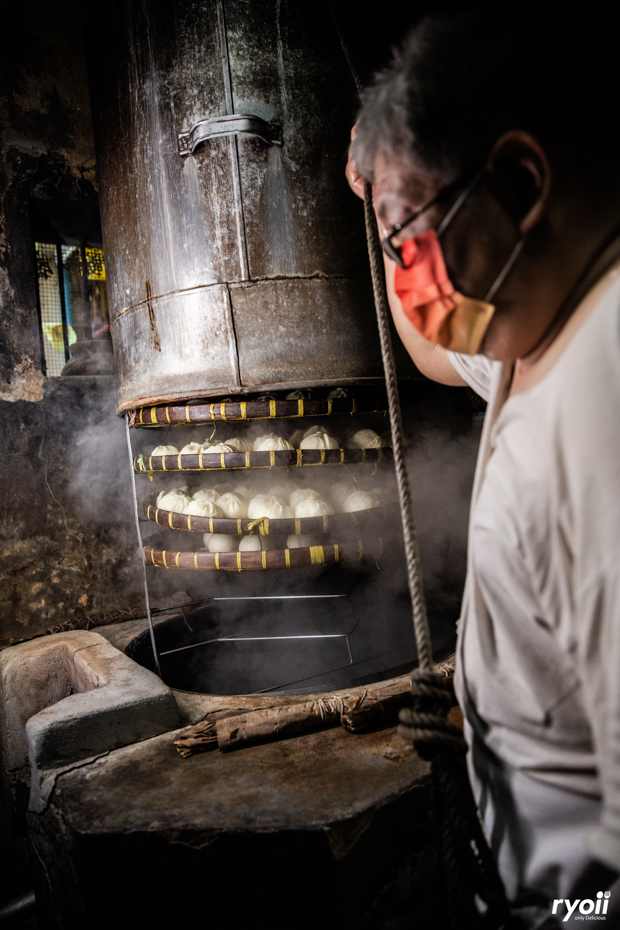
The process of steaming must not be missed because each steamed bun needs to be steamed in the right period of time to make the dough and the flavor perfectly cooked. Nowadays, Uncle Seng uses a stopwatch to know the time. In the past, there was nothing like this so Uncle Seng had to stare at the watch all the time. Now, although it’s not necessary anymore to watch the clock, he sometimes glances at it.
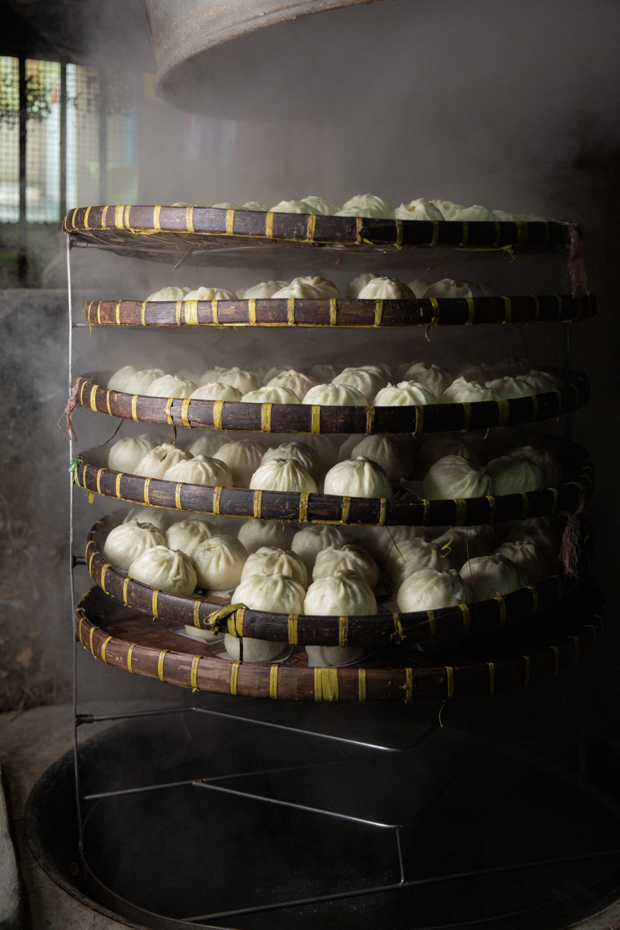
Even though the processes of kneading, making, filling, and steaming buns seem to be easy and not complicated, each process still has small details that Uncle Seng must not miss because it extremely needs attention from the makers all day.
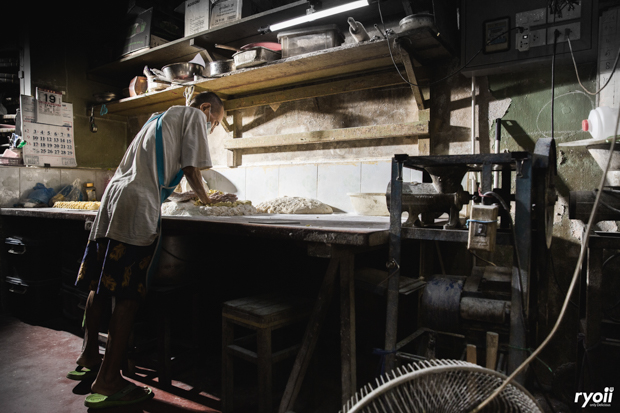
Uncle Seng said that there were many helpers in the past. Therefore, when they made steamed buns, it was like they were dancing. As time passed by, there were more facilities and fewer helpers. Though the number of people has decreased, Uncle Seng still has Hia Sit who is like his friend and the important figure helping him make, knead, and fill steamed buns.
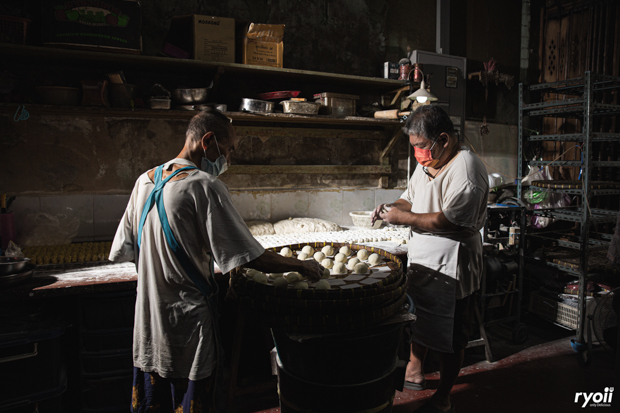
Hia Sit and Uncle Seng, Two Hidden Figures Who Started the Legendary Business
During the day, in ‘Tia Thong Seng Kitchen,’ people in this Sampheng lane are making steamed buns. Around Yaowarat, ‘Gu Long Bao’ is selling steamed buns and has customers all day.
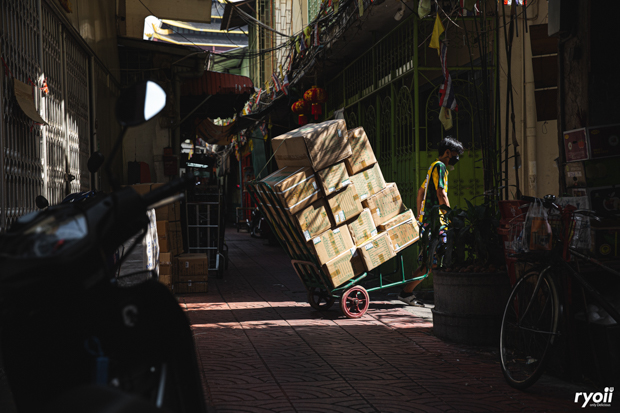
The brand ‘Gu Long Bao’ is a steamed bun brand created by ‘Nut’ and ‘Uncle Seng,’ nephew and uncle who were born in different eras but could see the value in traditional steamed buns in the same way. Nut said that he has eaten steamed buns made by his uncle since he was young and known that his steamed buns’ tastes are second to none and have interesting making processes so he created this brand.
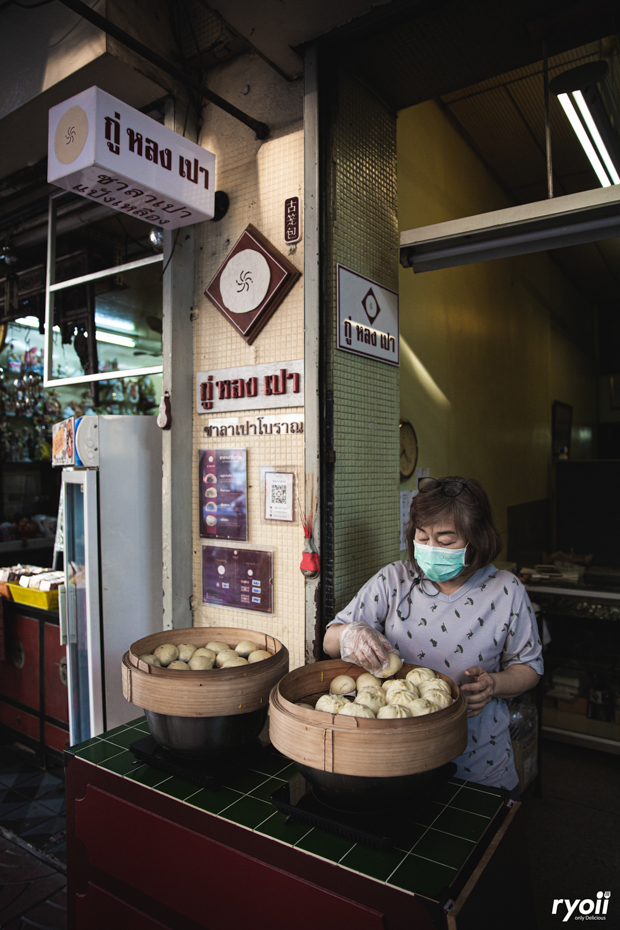
In front of Gu Long Bao where It Allows Customers to Order Takeaway
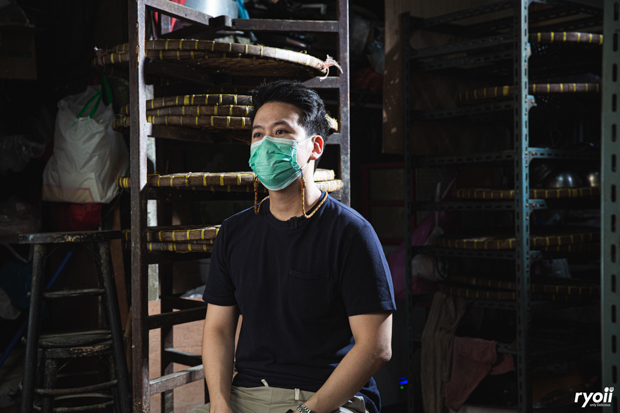
Nut, a Nephew of Uncle Seng Who Is a Key Person in Building the Legendary Brand
Moreover, Nut also knows that the steamed buns consist not only of delicious taste but are full of century-old stories as well. Although this brand is created by the new generation, it still remains the signature of the old generation. It can be seen from the name of this shop, ‘Gu = traditional Long = bamboo steamer basket Bao = bun.’
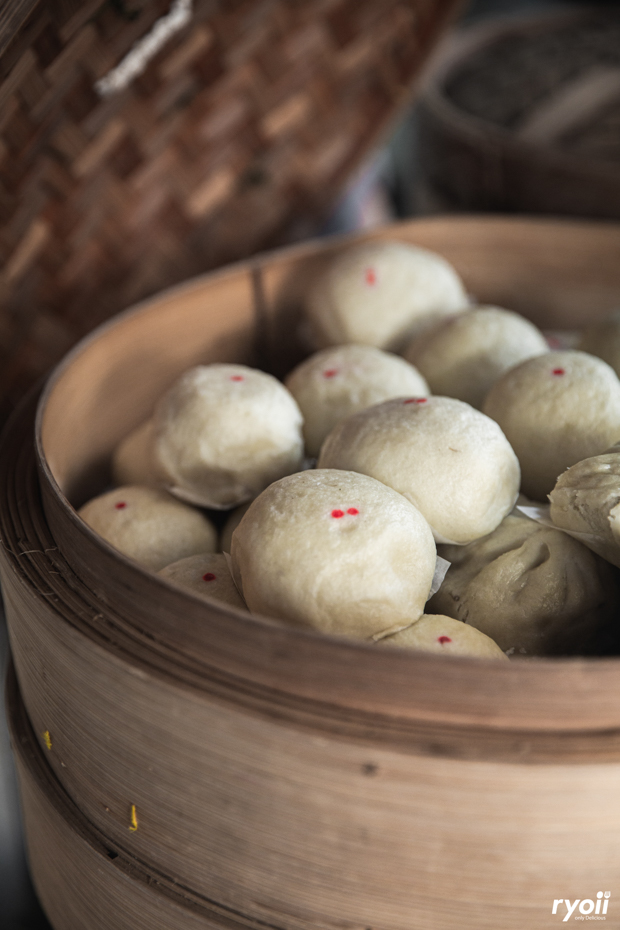
Besides preserving the signature, Gu Long Bao steamed bun shop also represents new tastes through ‘Baked Bun.’ All flavors of baked buns are the same as steamed buns’ flavors. However, baked buns are different because the shop bakes the oil-free buns until it’s crispy on the outside and soft and tender on the inside. It’s a special texture that cannot be found in other places.
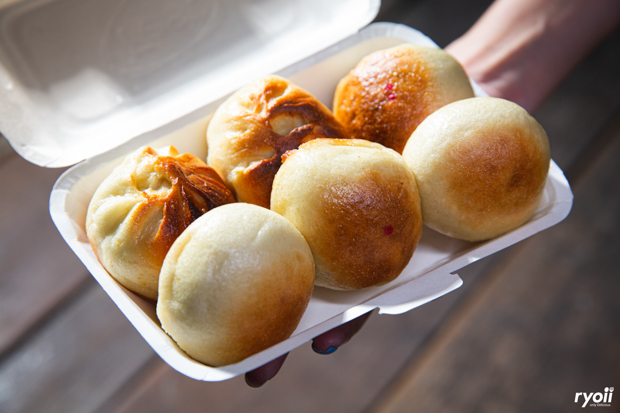
Baked Buns Costing 92 Baht (4 Pieces)
If you prefer traditional tastes, you can still choose from the steamed buns of the shop like usual. There are both steamed and frozen buns and both big and small buns to choose from.

The Price of Sweet Bean Steamed Bun with Sesame Seeds Starts Only at 65 Baht (at least 4 pieces)
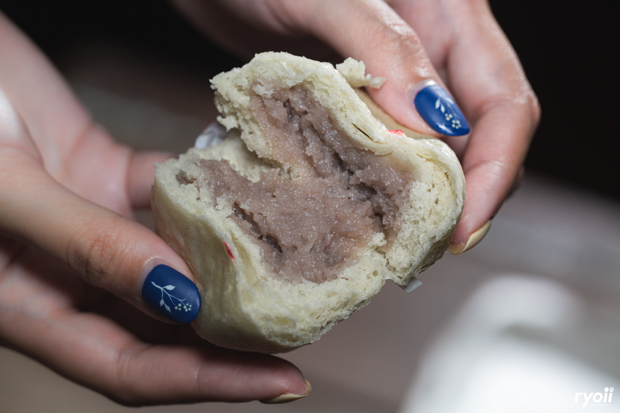
The Price of Steamed Bun with Taro Flavor Starts Only at 65 Baht (at least 4 pieces)
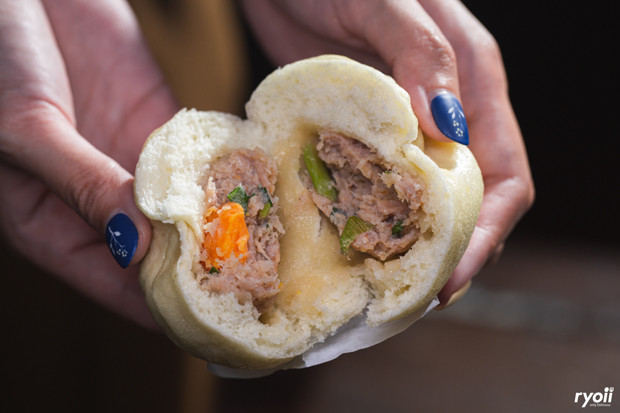
The Price of Minced Pork Steamed Bun Starts Only at 65 Baht (at least 4 pieces)
Although Tia Thong Seng and Gu Long Bao are small steamed bun shops and have tiny shop fronts where customers are welcomed, these places are full of centuries-old stories and memories that will go on in the future and attract steamed bun lovers endlessly.
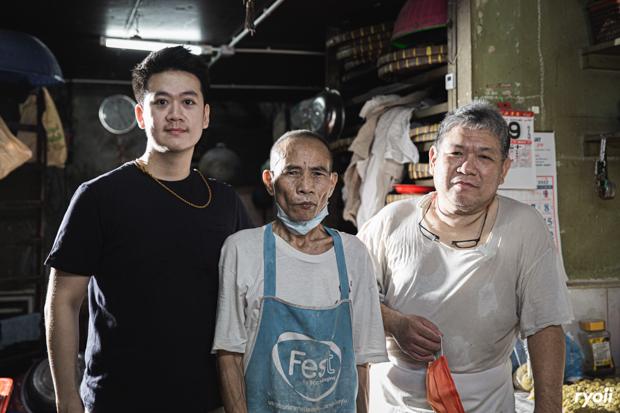
Nut, Hia Sit, and Uncle Seng, Three Key Figures of this Bussiness
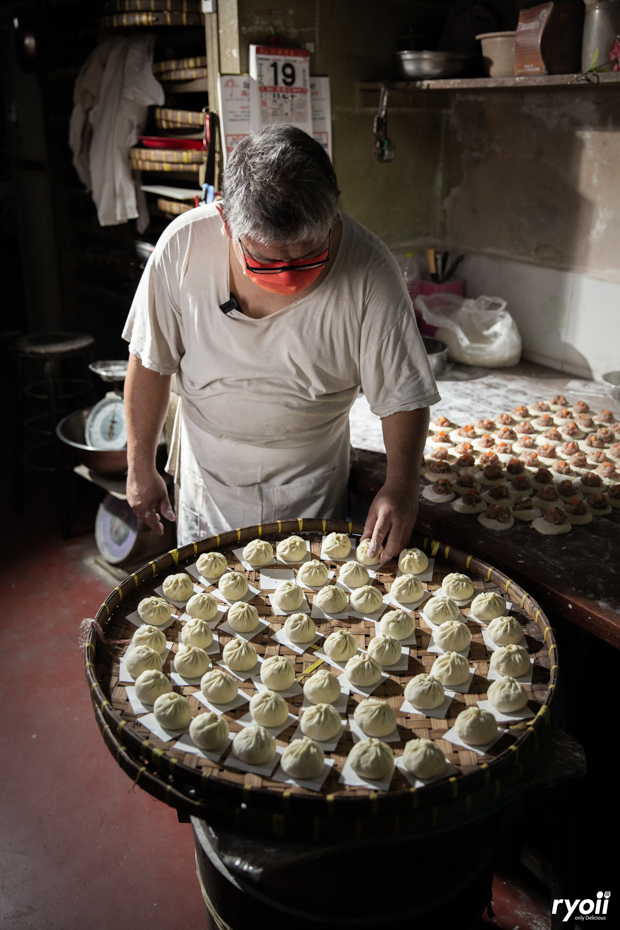
Before we are separated, Uncle Seng and Nut would like to recommend those who want to eat delicious steamed buns to taste the legendary taste of this shop. Furthermore, for others who want to try traditional Teochew-style steamed buns, you can buy them at ‘Gu Long Bao’ at Mo Mi Intersection, Yaowarat Road.
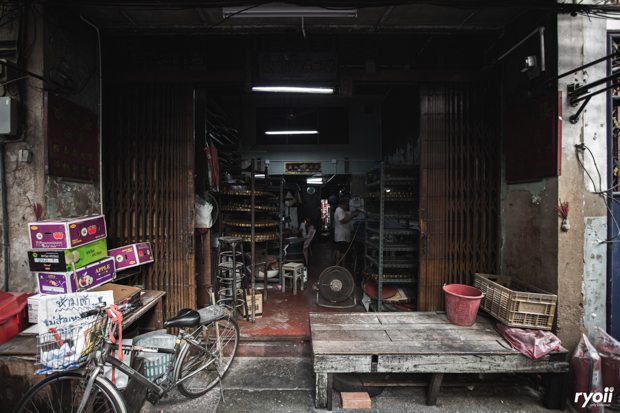
Tia Thong Seng, the Centuries-old Steamed Bun Kitchen
Ways to Go
Gu Long Bao is located at Charoen Krung Road around Mo Mi Intersection. Its front is in the same place as a glasses shop. You can go by using public transportation, MRT, get off at Exit 1 at MRT Wat Mangkon station (Dragon Temple Station), and then walk to Mo Mi Intersection. The shop is 250 meters away from the MRT so you will spend 2-3 mins walking to the shop located opposite Pizza Domino.
Outstanding Points of Gu Long Bao
1. There are three flavors of steamed buns to choose from: minced pork with salted egg yolk, sweet beans with sesame seeds, and stirred taro. Also, there are both frozen and steamed buns. It costs 65 baht (4 pieces), 120 baht (8 pieces), and 170 baht (12 pieces). For baked buns, it costs 92 baht (4 pieces).
2. Besides Teochew-style steamed buns with fillings, the shop also has Mantou without fillings, which is made from the same dough as buns with fillings. Also, there are both frozen and steamed mantou which costs 35 baht (4 pieces), 65 baht (8 pieces), and 90 baht (12 pieces). For baked mantou, it costs 60 baht (4 pieces).
3. You can buy minced pork steamed buns with salted egg yolks in 2 sizes: a small one costing 65 baht (4 pieces) and a big one costing 24 baht (1 piece). This is a good choice for those who extremely like this flavor.
4. Traditional Teochew-style steamed buns of this shop are made by hand and steamed in traditional Chinese wood-fired ovens. As they have special processes and ingredients, Gu Long Bao-style steamed buns are original and can be found only at this place.
Additional Information and Recommendations
1. Tia Thong Seng is just a kitchen for making steamed buns, not for selling them. Therefore, customers who want to buy steamed buns can buy at the front of Gu Long Bao around Charoen Krung Road and Mo Mi Intersection.
2. The open hours of this shop are 9:00 a.m. - 5.00 p.m. (closed on Sunday). For more details: Tel. 095-797-5747 or Line: @gulongbao
ปิดวันอาทิตย์


















